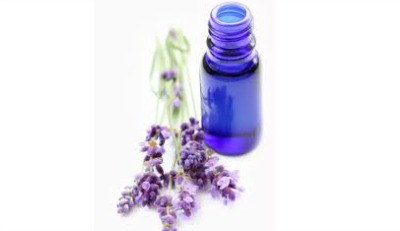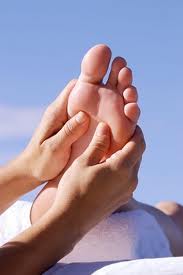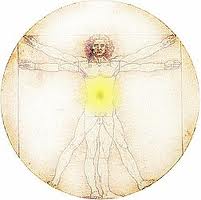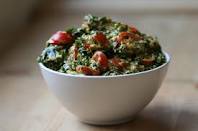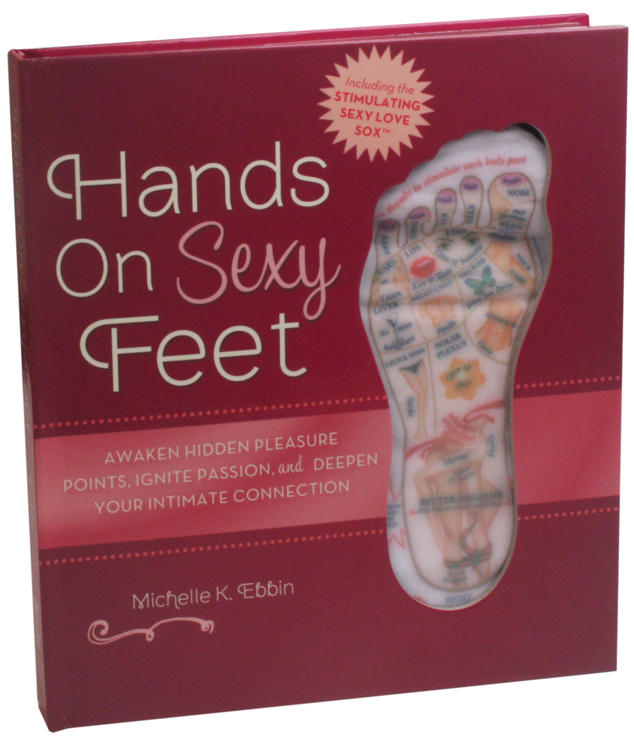Aromatherapy for Lovers
Massage Helps Depression
How to Prevent Alzheimer’s
So many families have been touched by Alzheimer’s. Now there is hope. According to Jean Carper, in her latest book “100 Simple Things You Can Do to Prevent Alzheimer’s and Age-Related Memory Loss” there are things we can do everyday. I highly recommend trying to incorporate a few of these easy things into your daily life. 
“The idea that Alzheimer’s is entirely genetic and unpreventable is perhaps the greatest misconception about the disease,” says Gary Small, M. D., director of the UCLA Center on Aging. Researchers now know that Alzheimer’s, like heart disease and cancer, develops over decades and can be influenced by lifestyle factors including cholesterol, blood pressure, obesity, depression, education, nutrition, sleep and mental, physical and social activity.
The big news: Mountains of research reveals that simple things you do every day might cut your odds of losing your mind to Alzheimer’s. In search of scientific ways to delay and outlive Alzheimer’s and other dementias, Carper tracked down thousands of studies and interviewed dozens of experts. Excerpted from her book, here are 10 strategies she found most surprising.
 1. Have coffee. In an amazing flip-flop, coffee is the new brain tonic. A large European study showed that drinking three to five cups of coffee a day in midlife cut Alzheimer’s risk 65% in late life. University of South Flo rida researcher Gary Arenas credits caffeine: He says it reduces dementia-causing amyloid in animal brains. Others credit coffee’s antioxidants. So drink up, Arendash advises, unless your doctor says you shouldn’t.
1. Have coffee. In an amazing flip-flop, coffee is the new brain tonic. A large European study showed that drinking three to five cups of coffee a day in midlife cut Alzheimer’s risk 65% in late life. University of South Flo rida researcher Gary Arenas credits caffeine: He says it reduces dementia-causing amyloid in animal brains. Others credit coffee’s antioxidants. So drink up, Arendash advises, unless your doctor says you shouldn’t.
2. Floss. Oddly, the health of your teeth and gums can help predict dementia.  University of Southern California research found that having periodontal disease before age 35 quadrupled the odds of dementia years later. Older people with tooth and gum disease score lower on memory and cognition tests, other studies show. Experts speculate that inflammation in diseased mouths migrates to the brain.
University of Southern California research found that having periodontal disease before age 35 quadrupled the odds of dementia years later. Older people with tooth and gum disease score lower on memory and cognition tests, other studies show. Experts speculate that inflammation in diseased mouths migrates to the brain.
3. Google. Doing an online search can stimulate your aging brain even more than reading a book, says UCLA’s Gary Small, who used brain MRIs to prove it. The biggest surprise: Novice Internet surfers, ages 55 to 78, activated key memory and learning centers in the brain after only a week of Web surfing for an hour a day.
 4. Grow new brain cells. Impossible, scientists used to say. Now it’s believed that thousands of brain cells are born daily. The trick is to keep the newborns alive. What works: aerobic exercise (such as a brisk 30-minute walk every day), strenuous mental activity, eating salmon and other fatty fish, and avoiding obesity, chronic stress, sleep deprivation, heavy drinking and vitamin B deficiency.
4. Grow new brain cells. Impossible, scientists used to say. Now it’s believed that thousands of brain cells are born daily. The trick is to keep the newborns alive. What works: aerobic exercise (such as a brisk 30-minute walk every day), strenuous mental activity, eating salmon and other fatty fish, and avoiding obesity, chronic stress, sleep deprivation, heavy drinking and vitamin B deficiency.
 5. Drink apple juice. Apple juice can push production of the “memory chemical” acetylcholine; that’s the way the popular Alzheimer’s drug Aricept works, says Thomas Shea, Ph. D., of the University of Massachusetts . He was surprised that old mice given apple juice did better on learning and memory tests than mice that received water. A dose for humans: 16 ounces, or two to three apples a day.
5. Drink apple juice. Apple juice can push production of the “memory chemical” acetylcholine; that’s the way the popular Alzheimer’s drug Aricept works, says Thomas Shea, Ph. D., of the University of Massachusetts . He was surprised that old mice given apple juice did better on learning and memory tests than mice that received water. A dose for humans: 16 ounces, or two to three apples a day.
6. Protect your head. Blows to the head, even mild ones early in life, increase odds of dementia years later. Pro football players have 19 times the typical rate of memory-related diseases. Alzheimer’s is four times more common in elderly who suffer a head injury, Columbia University finds. Accidental falls doubled an older person’s odds of dementia five years later in another study. Wear seat belts and helmets, fall-proof your house, and don’t take risks.
 7. Meditate. Brain scans show that people who meditate regularly have less cognitive decline and brain shrinkage – a classic sign of Alzheimer’s – as they age. Andrew Newberg of the University of Pennsylvania School of Medicine says yoga meditation of 12 minutes a day for two months improved blood flow and cognitive functioning in seniors with memory problems.
7. Meditate. Brain scans show that people who meditate regularly have less cognitive decline and brain shrinkage – a classic sign of Alzheimer’s – as they age. Andrew Newberg of the University of Pennsylvania School of Medicine says yoga meditation of 12 minutes a day for two months improved blood flow and cognitive functioning in seniors with memory problems.
8. Take D. A “severe deficiency” of vitamin D boosts older Americans’ risk of cognitive impairment 394%, an alarming study by England ‘s University of Exeter finds. And most Americans lack vitamin D. Experts recommend a daily dose of 800 IU to 2,000 IU of vitamin D3.
9. Fill your brain. It a. Tops: Juice. A glass of any fruit or vegetable juice three times a week slashed Alzheimer’s odds 76% in Vanderbilt University research. Especially protective: blueberry, grape and apple juice, say other studies.
b. Tea: Only a cup of black or green tea a week cut rates of cognitive decline in older people by 37%, reports the Alzheimer’s Association. Only brewed tea works. Skip bottled tea, which is devoid of antioxidants.
c. Caffeine beverages. Surprisingly, caffeine fights memory loss and Alzheimer’s, suggest dozens of studies. Best sources: coffee (one Alzheimer’s researcher drinks five cups a day), tea and chocolate. Beware caffeine if you are pregnant, have high blood pressure, insomnia or anxiety.
d. Red wine: If you drink alcohol, a little red wine is most apt to benefit your aging brain. It’s high in antioxidants. Limit it to one daily glass for women, two for men. Excessive alcohol, notably binge drinking, brings on Alzheimer’s.
e. Two to avoid: Sugary soft drinks, especially those sweetened with high fructose corn syrup. They make lab animals dumb. Water with high copper content also can up your odds of Alzheimer’s. Use a water filter that removes excess minerals.
5 Ways to Save Your Kids from Alzheimer’s Now Alzheimer’s isn’t just a disease that starts in old age. What happens to your child’s brain seems to have a dramatic impact on his or her likelihood of Alzheimer’s many decades later.
Here are five things you can do now to help save your child from Alzheimer’s and memory loss later in life, according to the latest research.
1. Prevent head blows: Insist your child wear a helmet during biking, skating, skiing, baseball, football, hockey, and all contact sports. A major blow as well as tiny repetitive unnoticed concussions can cause damage, leading to memory loss and Alzheimer’s years later.
2 Encourage language skills: A teenage girl who is a superior writer is eight times more likely to escape Alzheimer’s in late life than a teen with poor linguistic skills. Teaching young children to be fluent in two or more languages makes them less vulnerable to Alzheimer’s.
3. Insist your child go to college: Education is a powerful Alzheimer’s deterrent. The more years of formal schooling, the lower the odds. Most Alzheimer’s prone: teenage drop outs. For each year of education, your risk of dementia drops 11%, says a recent University of Cambridge study.
4. Provide stimulation: Keep your child’s brain busy with physical, mental and social activities and novel experiences. All these contribute to a bigger, better functioning brain with more so-called ‘cognitive reserve.’ High cognitive reserve protects against memory decline and Alzheimer’s.
5. Spare the junk food: Lab animals raised on berries, spinach and high omega-3 fish have great memories in old age. Those overfed sugar, especially high fructose in soft drinks, saturated fat and trans fats become overweight and diabetic, with smaller brains and impaired memories as they age, a prelude to Alzheimer’s.
Foot Rub Night!
IT’S FOOT RUB NIGHT! 
Today my sister told me that she was excited about the evening to come because…it’s “Foot Rub Night” in her house! Apparently, every Wednesday night, after the kids are in bed, she and her husband open a bottle of wine, turn the lights down, put some music on, and give each other foot massages on the couch. They use whatever oil or lotion they have, and they let their fingers do their magic. 20-30 minutes later, the mood in the house is 100% more peaceful and certainly more intimate.

Now, I have to admit, I was a little surprised to hear of this weekly ritual because I know how easy it is to flip on the TV and tune out after a long day. However, my sister has inspired me (the massage expert) and now I’m ready to incorporate a “Foot Rub Night” into our busy schedule. I’m putting it on the calendar so we can’t forget or blow it off. It’s a perfect way to de-stress, and I can’t believe we haven’t been doing this all along.
FOOT MASSAGE NIGHT: You don’t need any fancy techniques or even any lotion if you don’t have any. Sure, you can experiment with the reflexology tips that I write about, but all you really need are your hands and a comfortable place to lounge. Don’t wait! Why not put a Foot Massage Night on your calendar right now? And who knows where it will lead to?!
Natural Allergy Relief
 Are you suffering from allergies, asthma & sinus problems? I know more than a few people who are, myself included. According to allergy experts, with record pollen counts this fall has been one of the worst, and longest, allergy seasons yet. Due to a particularly wet summer, ragweed pollen levels have surged and standing water left over from summer flooding and Hurricane Irene has increased the amount of mold, a common year-round allergen, in the air. What’s more, the allergy season is expected to last a few weeks longer than usual this year, according to research published earlier this year in the Proceedings of the National Academy of Sciences.
Are you suffering from allergies, asthma & sinus problems? I know more than a few people who are, myself included. According to allergy experts, with record pollen counts this fall has been one of the worst, and longest, allergy seasons yet. Due to a particularly wet summer, ragweed pollen levels have surged and standing water left over from summer flooding and Hurricane Irene has increased the amount of mold, a common year-round allergen, in the air. What’s more, the allergy season is expected to last a few weeks longer than usual this year, according to research published earlier this year in the Proceedings of the National Academy of Sciences.

For natural relief, try this reflexology tip: Hold a hard ball, ideally a golf ball or if you’re lucky enough to have a massage ball, in your hand. Clasp your two hands together, interlinking fingers. Roll the golf ball over your palms for 30 secs. Target the area below your thumbs-the adrenal reflex area. Focus pressure on areas where it is most sensitive.
On the hand, this “allergy relief” area is found on the palms of both hands, halfway down the long first metacarpal bone of the hand below the thumb. To find the area (first on your left hand), rest your right thumb on top of your left thumb. Slide the right hand down toward the wrist, so that your thumb presses in the fleshy area bewteen the base of your thumb and your wrist. Your hand is now positioned so that your right index finger can curl around the hand and you can use your right thumb to exert pressure at the midpoint between wrist and the base of the thumb. Press here with your thumb and make small circles for about 15-20 seconds.
Does the area feel normal or tender and sensitive? If it’s sensitive, you’re right on target to the reflex area to the adrenals. If not, reposition your thumb slightly to press and test another area. 
Another reflex area to stimulate is the tip of each finger, which is the reflex area to the sinuses. Pinch each fingertip with your other hand for about 10 seconds each.
Soothe Your Solar Plexus & De-Stress
Stress relief from my what?!  In this day and age, who isn’t anxious once in a while? It’s a chaotic world, and it’s often hard to let go and really relax. Unfortunately, stress is very damaging to our entire system and most doctors agree that over 75% of our health problems can be linked to stress. When we’re stressed, our body’s defense mechanism begins to break down, making us more susceptible to illness and disease.
In this day and age, who isn’t anxious once in a while? It’s a chaotic world, and it’s often hard to let go and really relax. Unfortunately, stress is very damaging to our entire system and most doctors agree that over 75% of our health problems can be linked to stress. When we’re stressed, our body’s defense mechanism begins to break down, making us more susceptible to illness and disease. 
Anyone feeling stressed should become familiar with the SOLAR PLEXUS, the “nerve switchboard” of the body. This complex network of nerves, located behind the stomach and in front of the diaphragm, sends energy impulses to the upper part of the abdomen. Also called the “abdominal brain”, its purpose is to help balance the sympathetic nervous system, regulate the functions of the organs, and restore calm. It’s often affected by stress, anger, and depression.

Reflexology is extremely effective for calming and balancing the nervous system. It can help you let go of tension and soothe your mind. Reflexology is a drug-free coping mechanism for stress and a way to get in touch with what’s happening on the inside. For a quick route to stress relief, stimulate the reflex area to the SOLAR PLEXUS,
which is located on both feet, in the center of the foot, about half-way between the toes and the heel. This is a great starting point to relax yourself or your partner. Press the solar plexus point for 20 seconds to balance your nervous system and bring inner calm. Repeat this several times on each foot.
Stimulating the reflex to the solar plexus can relax the entire body and bring overall stress relief. It also promotes better, deeper breathing, and relieves the discomfort of allergies, asthma, and even acne. This reflex point is also the center of the third chakra, the Solar Plexus chakra, which relates to your personal power. Located an inch or two above the navel, this chakra is the focus point for our sense of power, ego, authority, self-control and discipline. It’s where the personality is formed. In addition to relieving stress, stimulate the SOLAR PLEXUS to better express your individuality and strength.
Massage Your Salad!
 Have you ever had a salad that just blows you away? I just used my hands to make a “Massaged Kale Salad” and I’m in heaven. While I normally don’t post recipes on my blog, this one I have to share because it is absolutely delicious, super healthy, and hey, it has something to do with massage.
Have you ever had a salad that just blows you away? I just used my hands to make a “Massaged Kale Salad” and I’m in heaven. While I normally don’t post recipes on my blog, this one I have to share because it is absolutely delicious, super healthy, and hey, it has something to do with massage.
Kale is an amazingly nutritious leafy green vegetable. It contains high amounts of beta carotene and vitamin C. It’s also rich in minerals and high in folic acid. This ‘Superfood’ is a low in carbs and high in protein. One cup of cooked kale contains :
– 50 Calories
– 10 gm of Carbohydrates
– 3 gm of protein
– 2 to 3 gm of fiber
– 8000 IUs Vitamin A
– 150 to 200 mg of Calcium
– 30 mg of Magnesium
– 2 mg of Iron
– 300 mg of Potassium
– 125 mg of Vitamin C
– Less than 50 mg of Sodium
– 40 mcg of Folic acid
The high calcium and magnesium content of kale helps in building bones and is great for preventing osteoporosis. Vitamin A and C are antioxidants that protect against many degenerative diseases. The high potassium and low sodium content of Kale makes it an alkaline food and helps those who suffer from acidity and other digestive disorders. Potassium also reduces blood pressure and helps in fighting heart disease. Being a cruciferous vegetable, Kale contains sulfur compounds which help in fighting cancer.
Now, onto my new favorite salad…
Michelle’s Massaged Kale Salad
1 bunch curly kale
½ cup cooked quinoa
½ cup yellow onion, thinly sliced
2 carrots, peeled & grated
1 avocado, cubed
2 tbsp. apple cider vinegar
2-4 tbsp. fresh lemon juice
1 tbs. Dijon mustard
1 tsp. garlic powder
1/8 tsp. sea salt
½ cup cherry tomatoes, halved
Rinse kale and tear the leaves from the stem. Rip them into smaller pieces. Place in a big bowl with the quinoa, onion, carrot, and avocado.
In a separate small bowl, whisk the apple cider vinegar, lemon juice, mustard, garlic powder, and sea salt.
Now, here’s the fun part: With both hands firmly massage all the ingredients together. Don’t be afraid to get your hands dirty. Massage the avocado into the kale so that it smooshes and there are no more chunks. Do this for about one minute so that all the leaves are covered with the dressing. This massage, together with the lemon juice and apple cider vinegar, helps to tenderize the kale.
Finally, add the tomatoes, gently toss the salad, and put it into the refrigerator for 6-8 hours. I like to make this salad the day before I plan to eat it and let all the juices sink in. Remember, the longer it stays in the fridge, the better it gets!
Just before serving, give it a hearty round of freshly ground pepper and taste to see if it needs more salt.
You can beef up this recipe with more grated carrot, avocado and additional quinoa if you like. ENJOY!


